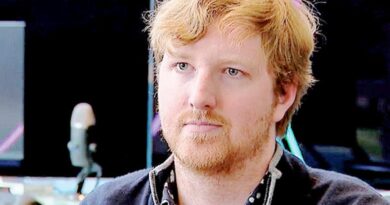Toyota ‘investing like crazy’ in new EV batteries but no big sea change expected
HIROSHIMA, Japan — Toyota is “investing like crazy” in new battery technologies for electrified vehicles but sees no dramatic breakthrough from today’s basic chemistry for at least another decade.
The lithium ion composition used in contemporary EVs and hybrids will likely be the go-to for another 10 to 20 years, the Japanese carmaker’s top scientist predicts.
“We are investing like crazy in new types of batteries,” said Gill Pratt, Toyota’s chief scientist. “But we’re very pragmatic and honest about these things. It’s high-risk, high-reward research.”
Speaking to Automotive News on Thursday on the sidelines of the G7 Summit here, Pratt said it is difficult to predict when researchers might strike upon a battery breakthrough technology.
“I’m not sure when it’s going to pan out,” he said. “But I suspect that again, maybe 10 to 20 years from now, we’ll see some pragmatic change — from the current chemistries that are used — to something else. And exactly what that’s going to be, I’m not sure.”
Alternative chemistries, such as lithium iron phosphate deployed by some carmakers including Toyota, have tradeoffs and aren’t necessarily wholesale substitutes for lithium ion, Pratt said.
Sodium-based chemistries, for example, have lower energy densities because the sodium molecule is bigger than the lithium molecule. Sodium batteries might be put to better use in stationary power packs, whereas lithium ion ones might continue having more merit in vehicles.
“Lithium ion is here for quite some time because it’s so good,” Pratt said. “We’re really unlikely to find something that’s dramatically better on multiple axes in the near future.”
Toyota plans to plow nearly $14 billion into battery development through 2030, including plans for a ramp-up of solid-state batteries and next-generation lithium ion power packs.
Reliance on lithium is a big reason Toyota Motor Corp. continues to plug hybrid vehicles as a potent path to reducing global carbon dioxide emissions. Spreading limited resources of lithium across a larger fleet of hybrids takes a bigger bite out of emissions than concentrating the lithium in a smaller number of full-electric vehicles, according to Toyota’s calculations.
The impact will be especially acute over the next decade or so because the global supply of lithium is expected to be constrained as new lithium mines and processing centers are set up.
“Our hope is that the supply shortages can be resolved roughly 20 years from now,” Pratt said.
Recycled lithium coming back to market from batteries in older EVs and hybrids taken out of circulation should ease the bottleneck.
Solid-state batteries offer one avenue to more efficient use of lithium. Pratt said solid-state requires about half the lithium of today’s liquid-electrolyte lithium ion batteries.
But those batteries are several years away and may take even longer to go mainstream.
Because of the looming uncertainty, Toyota says it makes more sense to spread bets across different technologies. That gives the company the flexibility to respond to unforeseen scientific breakthroughs, shifting regulations and the diverse needs of different global markets.
Pratt offered his battery assessment while warning that overzealous mandates for EV adoption could backfire and result in worse than planned carbon dioxide emissions.
Why?
Requiring that older internal combustion cars be replaced with EVs will deter some people from buying new cars altogether because EVs are too expensive for them. These people are likely to hang on longer to old gas-guzzlers and keep pumping out emissions.
“The [internal combustion engine] cars that would be kept on the road would tend to be older ones with even more carbon dioxide emissions,” Pratt said, presenting a model calculating the impact. “We must beware of unintended paradoxical consequences that can result from our good intentions.”
Flexible regulations allowing a greater mix of hybrids, however, may shift more people from full-gasoline vehicles to more efficient gasoline-electrics that aren’t as pricey as EVs.
This would have the intended benefit of helping reduce emissions.
“Instead of limiting what powertrains customers can buy, let’s regulate the full life cycle amount of carbon dioxide emitted,” Pratt said, “and give customers the flexibility to contribute the most they can to minimize emissions — no matter their circumstances.”
Source : Autonews.com




